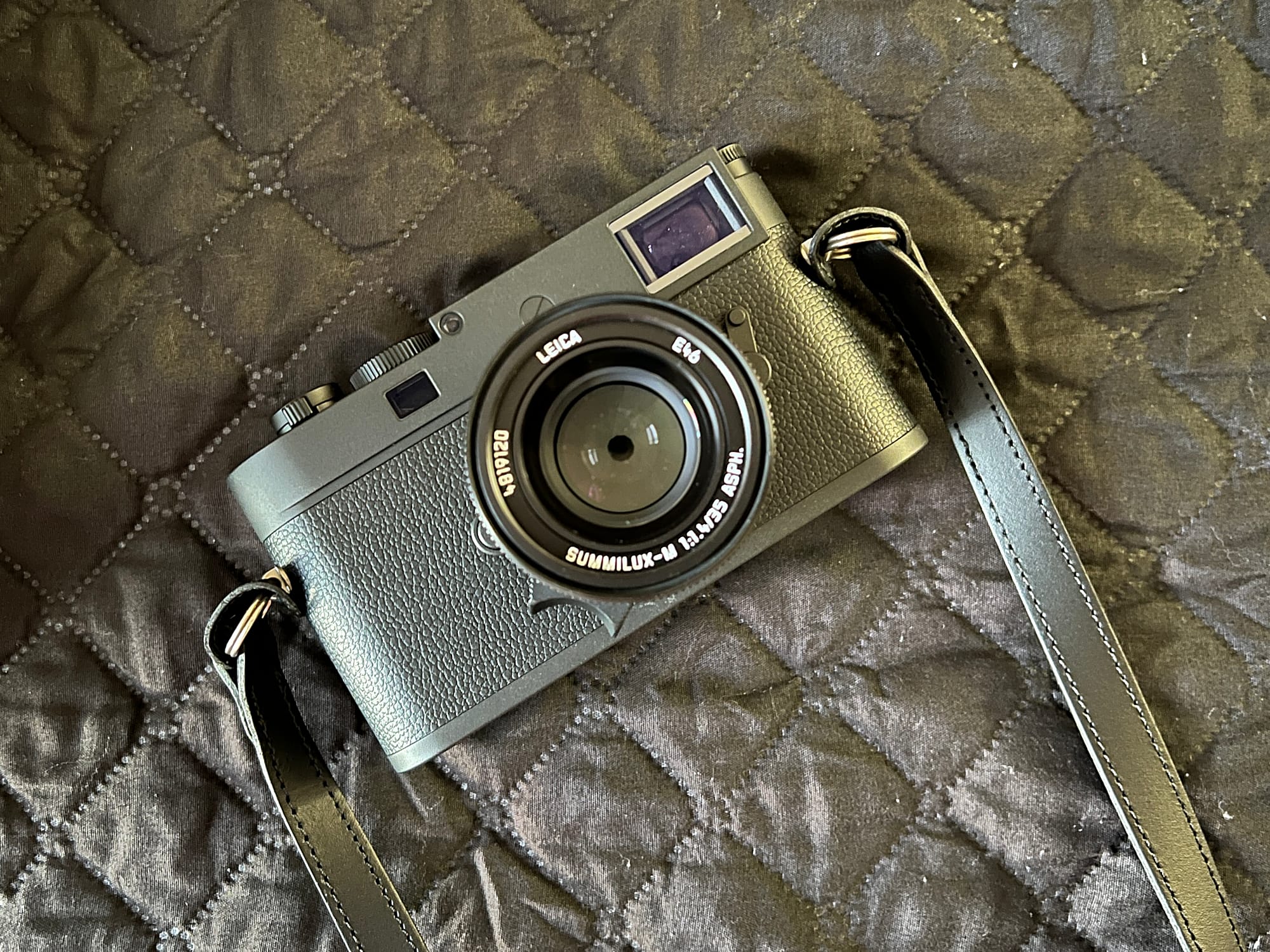Leica rangefinder cameras were loved by legends of photojournalism, such as Henri Cartier-Bresson and Robert Capa, who documented the historic events of the 20th century. They also shot almost exclusively in black and white.
Now, there is the new Leica M11 Monochrom, a digital rangefinder camera that shoots only in black and white. And I was lucky enough to have a hands-on for the new camera for a few days.

- Price: S$13,470 (body only), get it at Leica Store
- Image sensor: 60-megapixel full-frame BSI CMOS monochrome sensor
- Sensitivity: ISO 125 to 200,000
- Internal storage: 256GB
- External storage: SDXC cards up to 2TB
- Weight: 540g (body only)
For the uninitiated, a rangefinder camera uses a range-finding focusing mechanism incorporated into an optical viewfinder (OVF) that lets the photographer measure the subject distance and take photos.
The OVF will show two images of the subject. To focus, you need to look through the rangefinder and turn the focusing ring of the lens till the two images fuse into one. Everything, down to setting aperture and shutter speed, is done manually. Yes, there is no autofocusing.
For this review, Leica lent me the Summilux-M 35mm f/1.4 ASPH Black lens (S$8,420, get it at Leica Store) to use with the M11 Monochrom.

This camera is actually the fourth generation of true monochrome M cameras based on the M11 sensor with Triple-resolution technology. Unlike regular colour image sensors, this M11’s monochrome image sensor does not need to filter light into red/green/blue, so there is almost no light loss. As a result, it is more sensitive to light, and images should have more sharpness, details and contrast.
Furthermore, I like that the camera comes only in all-black. In fact, there is no iconic red dot – aka Leica logo – on the camera. Even the OVF’s coating is in dark chrome. This is probably in a tribute to pioneers like Cartier-Bresson, who famously masked his Leica with black gaffer tape, to remain stealthy and discreet.

The body of M11 Monochrom is made of magnesium and aluminium alloy with leather wrapped around the middle. The top plate and base plate are are covered in scratch-resistant black paint finish. It feels strong and sturdy in your hands.
A shutter-speed dial, a shutter-release button and a customisable Fn button sit on the right at the top of the camera. On the top left of the camera is the ISO dial. You need to pull it up before turning the dial.

On the rear, a small command dial is sited on the little thumb rest at the top right. Below it is a four-way directional button. The display, which is protected by sapphire glass, takes up most of the back, with three buttons – Play, Function and Menu – on its left.
At its bottom, you will find a USB-C port that lets you charge conveniently the camera. It does come with a charger that also uses a USB-C cable to charge.

If you have handled a rangefinder before, you will have no issues with this camera. But newbies will need to get used to it. However, you can use Live View to focus if the OVF is too much for you to handle. Sharply focused edges will be highlighted by coloured lines on the display.

The picture quality is out of this world – amazingly sharp, full of details and with great contrast, together with that exquisite romantic quality of black and white photos. This is of course, thanks to the excellent Summilux-M 35mm f/1.4 ASPH Black lens.
You do not need to worry about chromatic noise as there are no colours. Even on higher ISO settings, the image noise looks like the beautiful fine grain found in black and white photos of yesteryear.
Due to work commitments, I could not test the M11 Monochrom as much as I like. And if I have the moolah, I would have just bought the camera along with this lens.
However, just by walking with this camera, it makes me feel like going back to my first love – street photography. The camera just feels like a tool to return to the purest form of photography – the spontaneity, the serendipity and the satisfaction of capturing the decisive moment.
Below are some photos I took using the M11 Monochrom, which I hope will do justice to the camera.




One thought on “Leica M11 Monochrom First Look: Back to photography in its purest form”
Comments are closed.